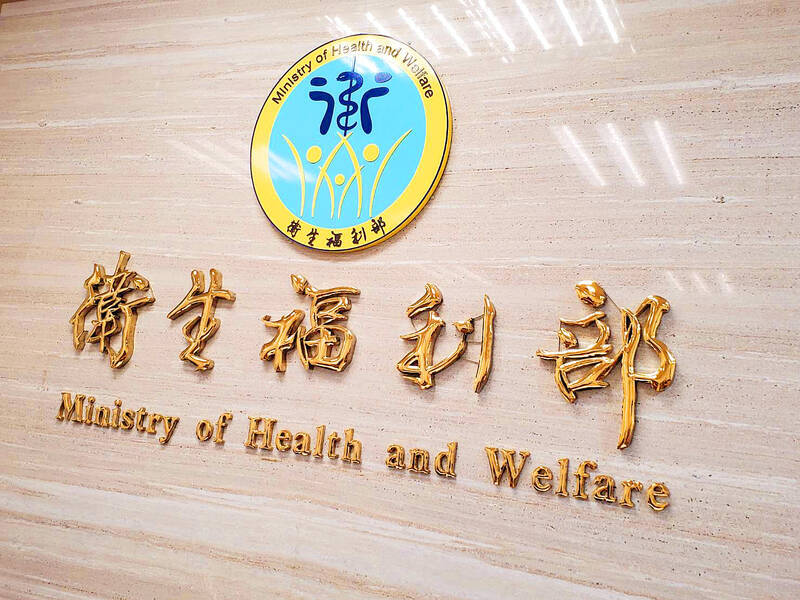The Vaccine Injury Compensation Program (VICP) has agreed to give NT$1.5 million (US$46,164) in compensation to the family of a woman in her 90s who went into anaphylactic shock about five to 10 minutes after receiving a dose of Moderna’s COVID-19 vaccine and died after emergency treatment in July 2022.
The case was revealed in the meeting minutes of a VICP review committee meeting on April 25, which was released recently.
The elderly woman, surnamed Hsu (許), was from Changhua County and had a medical record of asthma, hypertensive heart disease and diabetes. She showed skin paleness and her blood pressure dropped after receiving a dose of Moderna’s vaccine, and eventually died, the meeting minutes said.

Photo: Lin Hui-chin, Taipei Times
An autopsy found granulated mast cells in the woman’s liver, indicating anaphylactic shock, which is a severe and life-threatening allergic reaction.
The committee agreed to award Hsu’s family with compensation of NT$1.5 million and a funeral subsidy of NT$300,000, the meeting minutes showed.
Asked for comment, Centers for Disease Control Deputy Director-General Tseng Shu-hui (曾淑慧) yesterday said the woman lived in a residential long-term care facility, and that she received the vaccine in July 2022.
The woman’s symptoms appeared about five to 10 minutes after getting the vaccine shot, and she was rushed to an emergency room, she said.
Given that the autopsy indicated anaphylactic shock and considering Hsu’s multiple underlying health conditions — including asthma, hypertensive heart disease, hyperthyroidism, diabetes and Parkinson’s disease — worsened her allergic reaction, the committee deemed her death COVID-19 vaccine-related, Tseng said.
Separately, the meeting minutes of a VICP review committee meeting on March 28 showed that a Taichung man in his 50s, surnamed Chu (朱), was awarded NT$1 million as compensation for the adverse side effects caused by a flu vaccine.
The man experienced left side paralysis, articulation disorder and facial palsy after receiving a dose of flu vaccine, the minutes said.
He was rushed to the hospital, where a carotid ultrasound was performed and found he had arterial stenosis.
Arterial stenosis is caused by chronic pathological changes and does not suddenly develop in a short period of time. Although the blood test showed that the man had a viral infection, the flu vaccine is an inactivated vaccine that cannot cause an active infection.
However, as the committee could not determine whether the man’s transverse myelitis, a neurological disorder caused by inflammation of the spinal cord, is associated with the flu vaccine, he is to be given relief of NT$1 million.
Tseng said there are still more than 2,000 cases of vaccine injury compensation waiting to be reviewed, and that the committee has been reviewing about 200 to 300 cases per month.
Additional reporting by CNA

SHIPS, TRAINS AND AUTOMOBILES: The ministry has announced changes to varied transportation industries taking effect soon, with a number of effects for passengers Beginning next month, the post office is canceling signature upon delivery and written inquiry services for international registered small packets in accordance with the new policy of the Universal Postal Union, the Ministry of Transportation and Communications said yesterday. The new policy does not apply to packets that are to be delivered to China, the ministry said. Senders of international registered small packets would receive a NT$10 rebate on postage if the packets are sent from Jan. 1 to March 31, it added. The ministry said that three other policies are also scheduled to take effect next month. International cruise ship operators

NUMBERS IMBALANCE: More than 4 million Taiwanese have visited China this year, while only about half a million Chinese have visited here Beijing has yet to respond to Taiwan’s requests for negotiation over matters related to the recovery of cross-strait tourism, the Tourism Administration said yesterday. Taiwan’s tourism authority issued the statement after Chinese-language daily the China Times reported yesterday that the government’s policy of banning group tours to China does not stop Taiwanese from visiting the country. As of October, more than 4.2 million had traveled to China this year, exceeding last year. Beijing estimated the number of Taiwanese tourists in China could reach 4.5 million this year. By contrast, only 500,000 Chinese tourists are expected in Taiwan, the report said. The report

The Forestry and Nature Conservation Agency yesterday launched a gift box to market honey “certified by a Formosan black bear” in appreciation of a beekeeper’s amicable interaction with a honey-thieving bear. Beekeeper Chih Ming-chen (池明鎮) in January inspected his bee farm in Hualien County’s Jhuosi Township (卓溪) and found that more than 20 beehives had been destroyed and many hives were eaten, with bear droppings and paw prints near the destroyed hives, the agency said. Chih returned to the farm to move the remaining beehives away that evening when he encountered a Formosan black bear only 20m away, the agency said. The bear

Chinese embassy staffers attempted to interrupt an award ceremony of an international tea competition in France when the organizer introduced Taiwan and displayed the Republic of China flag, a Taiwanese tea farmer said in an interview published today. Hsieh Chung-lin (謝忠霖), chief executive of Juxin Tea Factory from Taichung's Lishan (梨山) area, on Dec. 2 attended the Teas of the World International Contest held at the Peruvian embassy in Paris. Hsieh was awarded a special prize for his Huagang Snow Source Tea by the nonprofit Agency for the Valorization of Agricultural Products (AVPA). During the ceremony, two Chinese embassy staffers in attendance